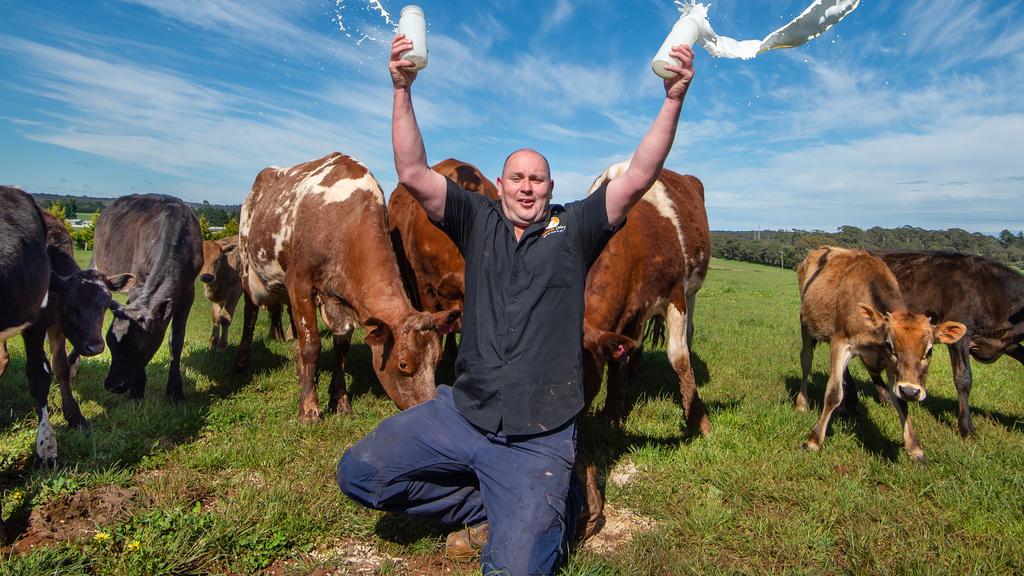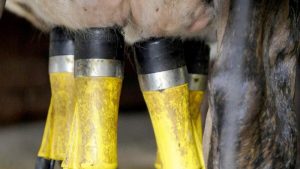
When eateries closed in March, Australia’s dairy farms saw a significant drop in milk supply demand as a result of cafe and restaurant restrictions.
Inglenook Dairy in Dunnstown, Victoria, went from 25,000 litres a week to 3500 litres after cafes cut weekly milk consumption by more than half.
“We lost 90 per cent of our business overnight, which impacted my staff and four other farming families,” Inglenook Dairy owner Troy Peterken said.
With a passion for supporting the local community, he shifted his focus to the retail market and was given an opportunity by Woolworths to stock his milk on its shelves.
Now the dairy milk processor, which manufactures its own products for distribution, is meeting soaring demand for farm-fresh milk, supplying up to 500 crates a week to 33 Woolworths stores in Victoria.
“It’s a win-win partnership,” said Woolworths dairy category manager Denise Cotter.
“A growing number of our customers want to buy their milk from local dairy farmers and we’re investing in local sourcing partnerships to offer this.”
Mr Peterken has since hired extra workers and put two more vans on the road.
“Community spirit is powerful and it helped save my business,” he said. “People want to support locally made products and Woolworths is giving them that option.”

























